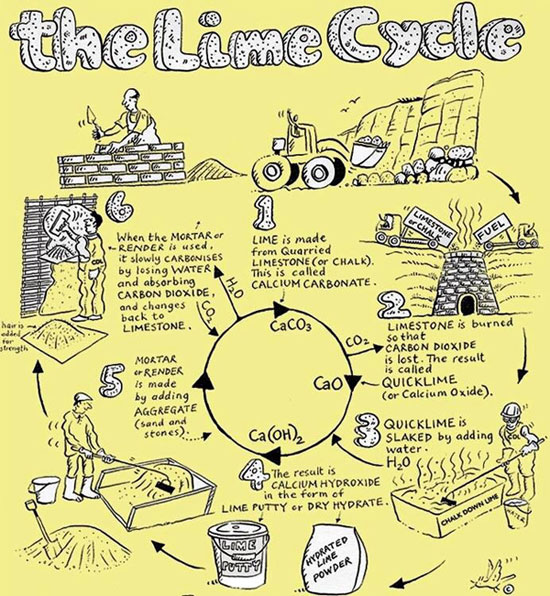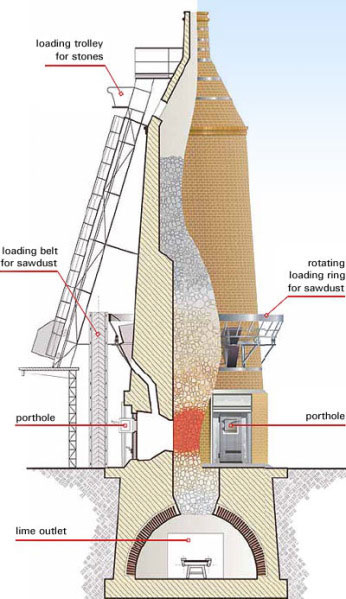Why Use Lime
 Breathability is the main reason why experts in conservation recommend the use of lime
Breathability is the main reason why experts in conservation recommend the use of lime- Breathability (when used internally & externally) Lime products are more vapour permeable than conventional materials. They allow the movement of water vapour to air. Lime mortar acts as a wick, drawing moisture out of brickwork, stonework and blockwork, reducing the drying time after rain and reducing the risk of spalling. Lime renders will allow any moisture that enters the substrate through building defects to escape through the render, instead of trapping the moisture behind the render, causing delimitation of the render.
- Flexibility (It will accommodate the better thermal expansion\contraction which often occurs in older buildings).
- Penetrating damp is the result of water coming through the walls.Control of Rising Damp ( In old buildings replacing hard cement render or pointing with a more suitable lime-based mortar, may be the best solution).
- Naturally Mold-Resistant
- Carbon production/absorption (Lime production uses less energy than cement production resulting in lower CO2 output).
- Lime products absorb carbon dioxide during curing.
History Of Lime

Modern Lime Kill
Lime has been used as a binder for stones and brick, and as a plaster or render, for thousands of years.
The earliest documented use of lime as a construction material was approximately 4000 B.C. when it was used in Egypt for plastering the pyramids.
Almost all buildings constructed in Ireland before 1900 will have been built using lime, because of its durability and long life.
The use of lime began to decline with the invention of Portland cement in 1824 and this continued until the 1960’s, at which time the interest in historical preservation began to increase.
Architects and builders “rediscovered” lime’s interesting characteristics not just for remodelling and renovation, but also for new construction.
Among the oldest and most vital materials used by humans, lime and limestone products are more in demand today than ever before in history.
